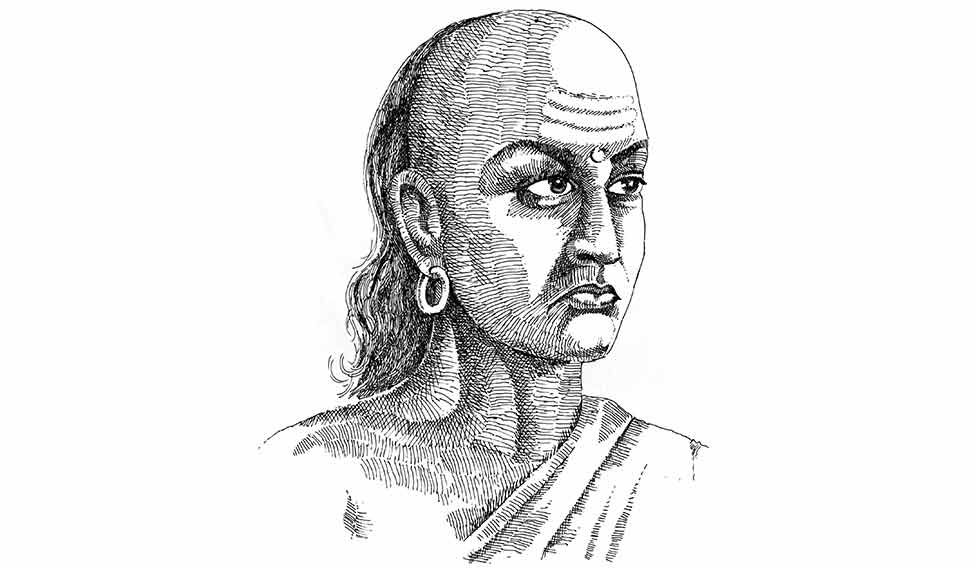
Chanakya Neeti is synonymous with efficient statecraft around the world, and Chanakya is India’s face of political statecraft and the rich political understanding of its ancient heritage. No political efficiency is devoid of understanding Chanakya and his ways of statecraft. In fact, he showed the world what political theory is in practice. Ancient Indian history is incomplete without a reference to his ways of statecraft and politics.
Chanakya amazes any scholar with his multifaceted character, but it had a distinct focused aim. He was more about philosophy and thoughts put into action. He does not bore you with his philosophical theory but engages you to think, act and achieve what you dream of. He overthrew a mighty empire and put in the throne a humble man like Chandragupta Maurya. He identified the potential ruler from a group of children, thus gave the world a great sovereign who united the Indian subcontinent into a political and administrative unit.
Educated at Taxila, Chanakya had a firm grasp of both theory and practice of administration and politics. Evidence shows that he initially served the Nanda dynasty of Magadha. Once, he was insulted by the Nanda king Dhana Nanda. An angry Chanakya taught Chandragupta the art of war and raised an army. He defeated Nanda and replaced him with Chandragupta. By raising Chandragupta to the throne, Chanakya gave India its first emperor and proved that a man must be judged by his capability and not by his birth.
For sure, Chanakya’s mental capabilities were superb. The modern global diplomacy revolves around the his principle of 'saam, daam, dand, bhed' (persuade, purchase, punish, exploit the weakness). His Arthashastra elevates the state to a position where service to it entails imperatives unknown to morality. Though the work contains some normative admonitions to the “just king”, it is regarded as a compendium of previous political treatises and an accurate account of the polity, administration and economy of the Maurya empire. The book explores issues of social welfare and the composite ethics that hold a society together. It is useful for all aspirant rulers and leaders and could be a compulsory read for them to understand political course. It is not just a normative text but a realistic description of the art of running a state.
Chanakya would be identified as a professor of political science and economics at Taxila. He was an economic, political and royal adviser and a think tank, and can be credited to have given India its first complex united empire. His life revolved around two ancient cities—Taxila (now in Pakistan) and Pataliputra (now Patna in Bihar). Present-day commentators compare him to Machiavelli of the sixteenth century Italy. Prime Minister Narendra Modi, in one of his recent speeches, compared Sardar Patel to Chanakya and credited both of them with uniting India.
Chanakya is relevant to post-British reconstruction of India and also to the present-day rulers who are indifferent to civic welfare. He is still reminiscent of a vastly scheming and clever political adviser. His work stands out in a unique way to inspire statecraft and politics worldwide.
Syed Mubin Zehra is a historian, social analyst and columnist.
Chandragupta Maurya
Great conqueror
Chandragupta Maurya, his son Bindusara and grandson Ashoka are undoubtedly the pioneers of political and administrative unity of the Indian subcontinent. Prior to Chandragupta's consolidation of power, most of the subcontinent was divided into mahajanapadas, while the Nanda empire dominated the Indo-Gangetic plain.
Chandragupta conquered and subjugated almost the entire subcontinent by the end of his reign, except Tamil Nadu and the modern-day Odisha (Kalinga). His empire extended from Bengal in the east to Afghanistan in the west and the Himalayas in the north to the Deccan plateau in the south. It was the largest empire in Indian history till then.
The ancestry of Chandragupta is not definitely known. The Mahavamsa, a Ceylonese chronicle, links him to the kshatriya clan named Moriyas (after peacock or mora) of Pipphalivana. Latin classical writer Justin mentioned Chandragupta as novus homo, 'a man born in humble life', probably indicating his non-regal upbringing. When he was a child, he attracted the attention of Chanakya, who took him to Taxila. This new guru gave him a thorough grounding and convinced him he must get rid of the Nanda king for the good of the country.
Chandragupta proved to be not only a great conqueror but also a great administrator. Megasthenes, the ambassador of Seleucus, left detailed accounts of his system of government. The administrative skills and the military conquests of Chandragupta find a regal place not only in pages of history but also in the current political scenario.






